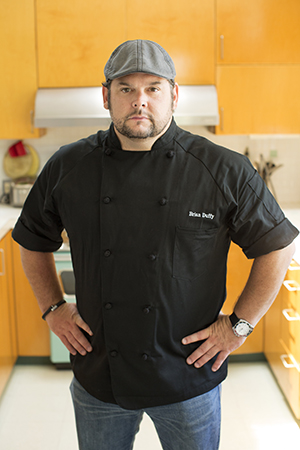
Guests entering a restaurant for the first time (or even after the third or fourth visit), are not likely paying attention to every detail, each carefully thought-out piece that fits together to create a successful restaurant. For Chef Brian Duffy, restaurant consultant and TV personality, this is not the case.
The process starts for Duffy as soon as he approaches the restaurant. From the entry, to the way he is greeted at the host stand, to the table setting: All these elements go into the transformation of a restaurant from good to better.
Here are the items Duffy considers in initial evaluations:
1. Exterior
• The exterior determines everything for what to expect on the interior. It’s all about attention to detail.
• Can you see servers or kitchen staff smoking? This immediately sets the tone for a diner and what they expect for their meal.
• Make sure the windows are clean, the sidewalk does not have trash and the signs portray your restaurant tastefully.
2. Hosts/Hostesses
• This is your first point of interaction with the person who is representing your restaurant. They should be facing the entrance, smiling and welcoming guests.
• Communicate!! Thank them for coming and take it a step further and use names!
• When walking to the table make the guest feel comfortable, do not walk too far ahead and always interact.
3. Table
• Settings should be clean and simple, with only the necessary plate and glassware (this will change depending on the venue and occasion).
• It’s important that when something is ordered the guest has everything needed to enjoy their dish. If they’ve ordered a hamburger, make sure there is ketchup already on the table. If they’ve ordered a soup, they need a spoon prior to the soup hitting the table.
Watch more tips from Brian Duffy >>
4. Servers
• Servers should approach the table a few short minutes after they are settled. Never let them sit too long without a greeting or offering water.
• Do the servers know the menu well? When someone asks for recommendations do they read off the entire menu or are they able to make suggestions based on what the guest is in the mood for?
• Do they walk past another table and notice dirty dishes without removing them? It is important to anticipate whether a table is finished, and remove clutter as soon as possible.
5. Menu
• Concise and simple are best. The menu should not be written like a book. Too many descriptive words distract from what is being offered.
• Make sure the layout is meaningful and clear.
• As simple as it sounds, Duffy sees spelling mistakes on menus almost every day. Have a second set of eyes look it over before printing.
• Make sure there are no stains or dirty marks.
6. Management
• Pay attention to the interaction between management and staff… i.e. Are they leaning on the bar and talking to the bartender or friends/patrons?
• What is the manager/server dynamic? Is there a lot of joking around between the waitstaff and manager during their shift?
• Is there training and supervision throughout the shift?
7. Kitchen
• If there’s a closed kitchen, guests should not be able to hear chaos or yelling.
• With an open kitchen, chefs need to remember they are on display and representing the restaurant.
Brian Duffy is perhaps most recognized from his appearances on the Spike TV series Bar Rescue, reforming failing bars and restaurants with his “tell it like it is” style.





